The Data
As all the testing was performed with the exact same equipment (except the 140mm Noctua Industrial fans replace the 120mm GT fans), using the exact same methods as was used in the 360mm round-up we have decided to keep this review uncluttered by keeping our testing methodology, test set-ups and equipment used in a single location. To see exactly how the tests were carried out, details of the test set ups and equipment used, please head over to the RRU Test Setup page.
Restriction Test
It is generally agreed that radiators are one of, if not the least restrictive components in the water cooling loop. There are some exceptions however, so this must still be verified through testing:
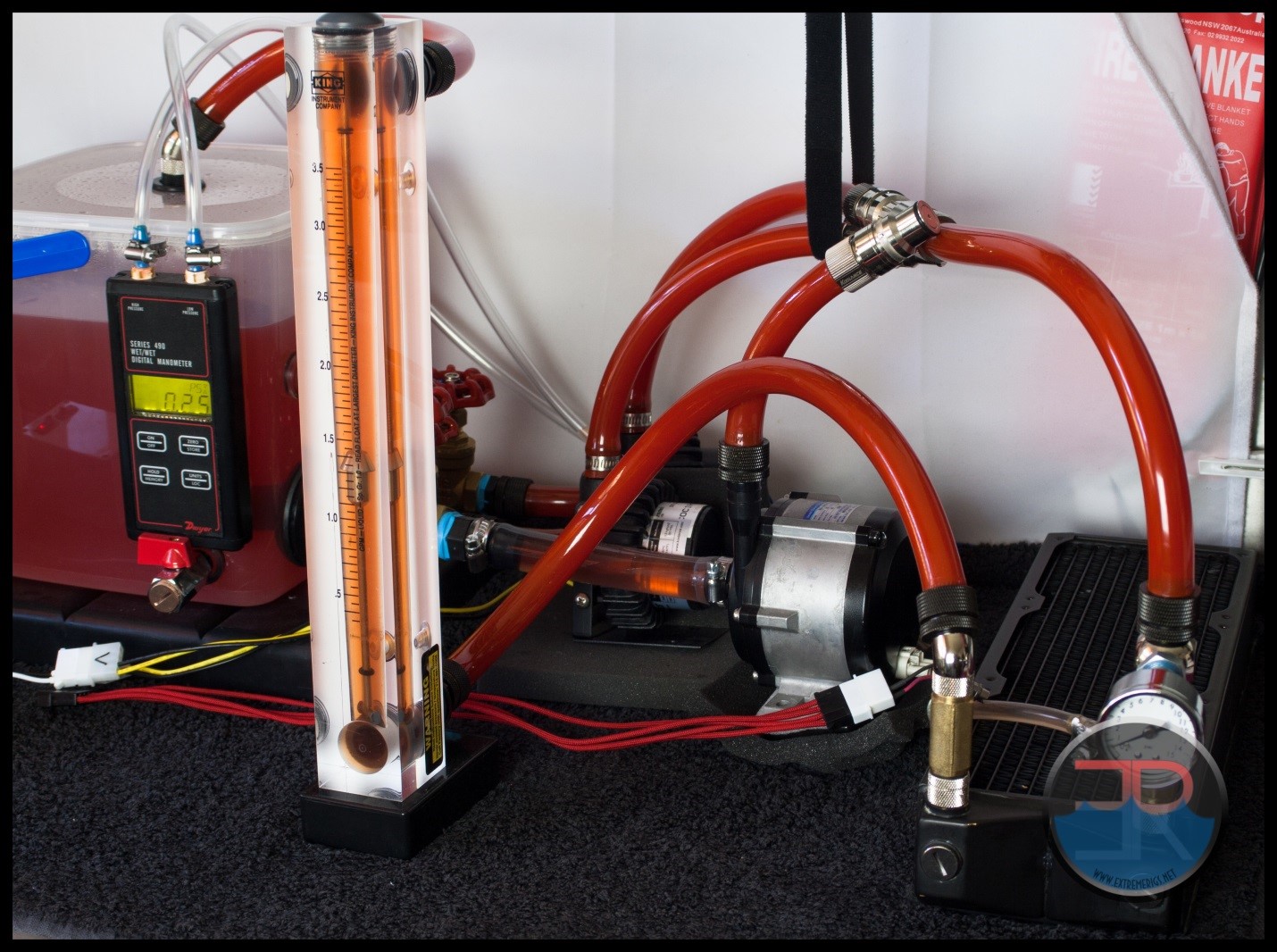 The above photo is for referencing the restriction test bench The Nemesis 280 GTX is not loaded so please disregard the data in the picture as it does not relate to the its test results.
The above photo is for referencing the restriction test bench The Nemesis 280 GTX is not loaded so please disregard the data in the picture as it does not relate to the its test results.
Here is the raw data at the tested flow rates, displaying the measured Differential Pressure across the radiator as flow rate was increased.
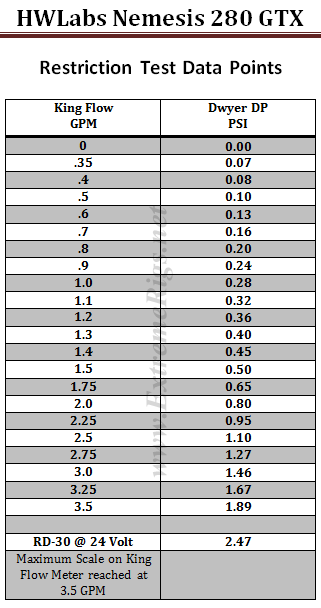 The table numbers indicate that the Nemesis 280 GTX might be a medium restriction radiator and the 1.0mm thick tubes would offer a logical explanation, but let’s not make any assumptions just yet. Numbers in isolation can only tell half the story. By plotting against other components it more easily shows the whole story.
The table numbers indicate that the Nemesis 280 GTX might be a medium restriction radiator and the 1.0mm thick tubes would offer a logical explanation, but let’s not make any assumptions just yet. Numbers in isolation can only tell half the story. By plotting against other components it more easily shows the whole story.
We use a HeatKiller 3.0 CPU block as the reference in this next plot for two reasons. Firstly there is little chance of the plot being cluttered by curves overlapping and secondly it gives a reference point against a fairly common loop component of average restriction.
As with all previous radiator restriction plots, we have limited the maximum flow rate displayed to 2.0 GPM as we suspect there are very few systems that operate above 2.0 GPM. For more information on how to read a restriction plot check out our guide.
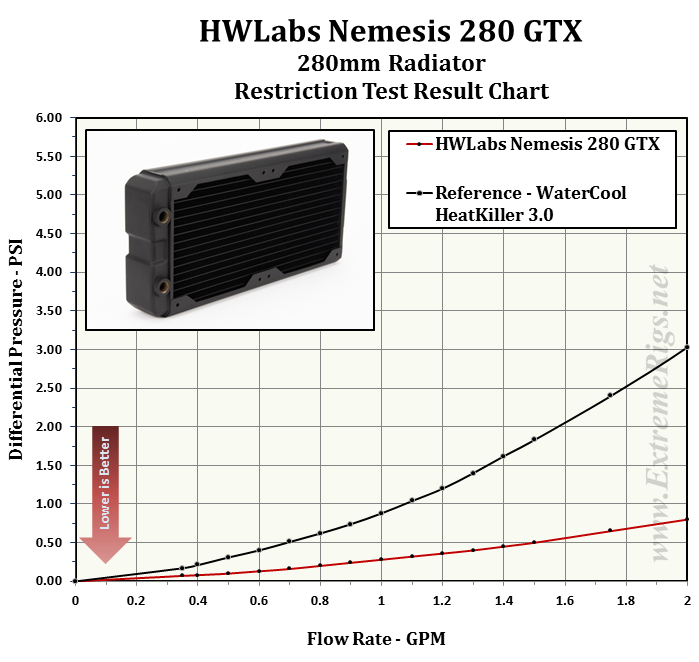 This plot indicates the Nemesis 280 GTX is a low restriction loop component when compared to a CPU block of average restriction, but what about other radiators?
This plot indicates the Nemesis 280 GTX is a low restriction loop component when compared to a CPU block of average restriction, but what about other radiators?
The next three plots show the restriction level at three different flow rates compared to the other 280mm radiator that have been tested. We consider the chosen GPM rates to represent systems which have low, medium and high flow rates.
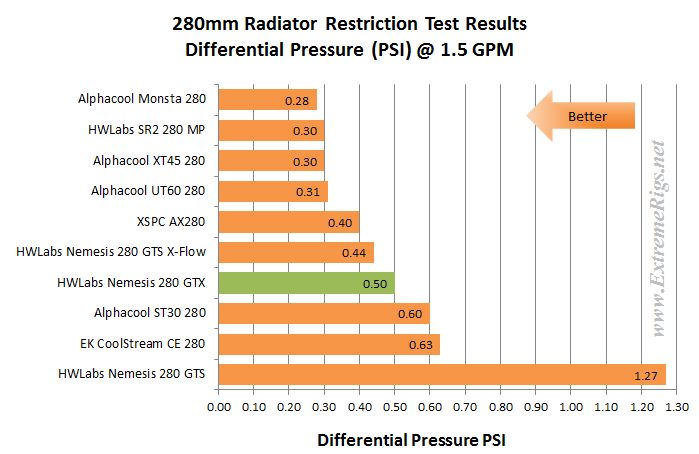
The Nemesis 280 GTX has a medium restriction level compared to other 280 radiators which were tested.
A zoomed in plot showing a flow rate zone where most systems are likely to be operating at.
Let’s now take a look at where the Nemesis 280 GTX fits in relation to all the radiators we have tested. For this plot, only results for 1.0 GPM have been used for the comparison.
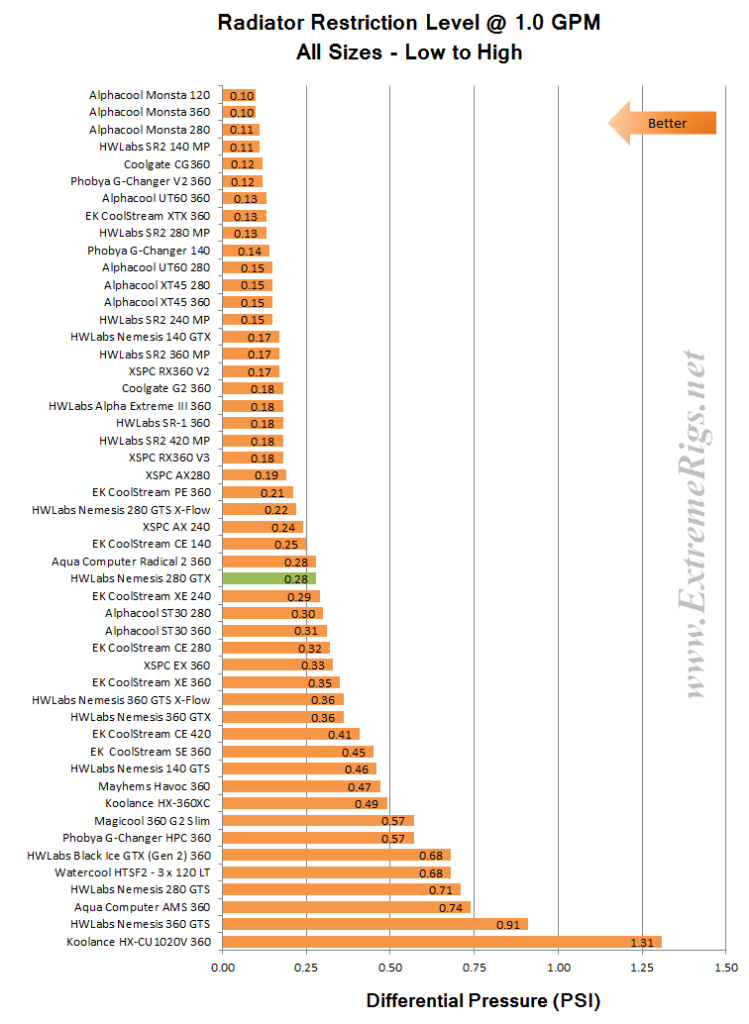 When put into context with all the radiators at 1.0 gpm, the Nemesis 280 GTX still fits our criteria as a medium restriction radiator.
When put into context with all the radiators at 1.0 gpm, the Nemesis 280 GTX still fits our criteria as a medium restriction radiator.
Some readers may find the following plot interesting or useful. It shows restriction levels at 1.0 gpm for many current model radiators from Hardware Labs including the Nemesis 280 GTX (0.28 PSI).
Next onwards to Thermal Performance!
![]()








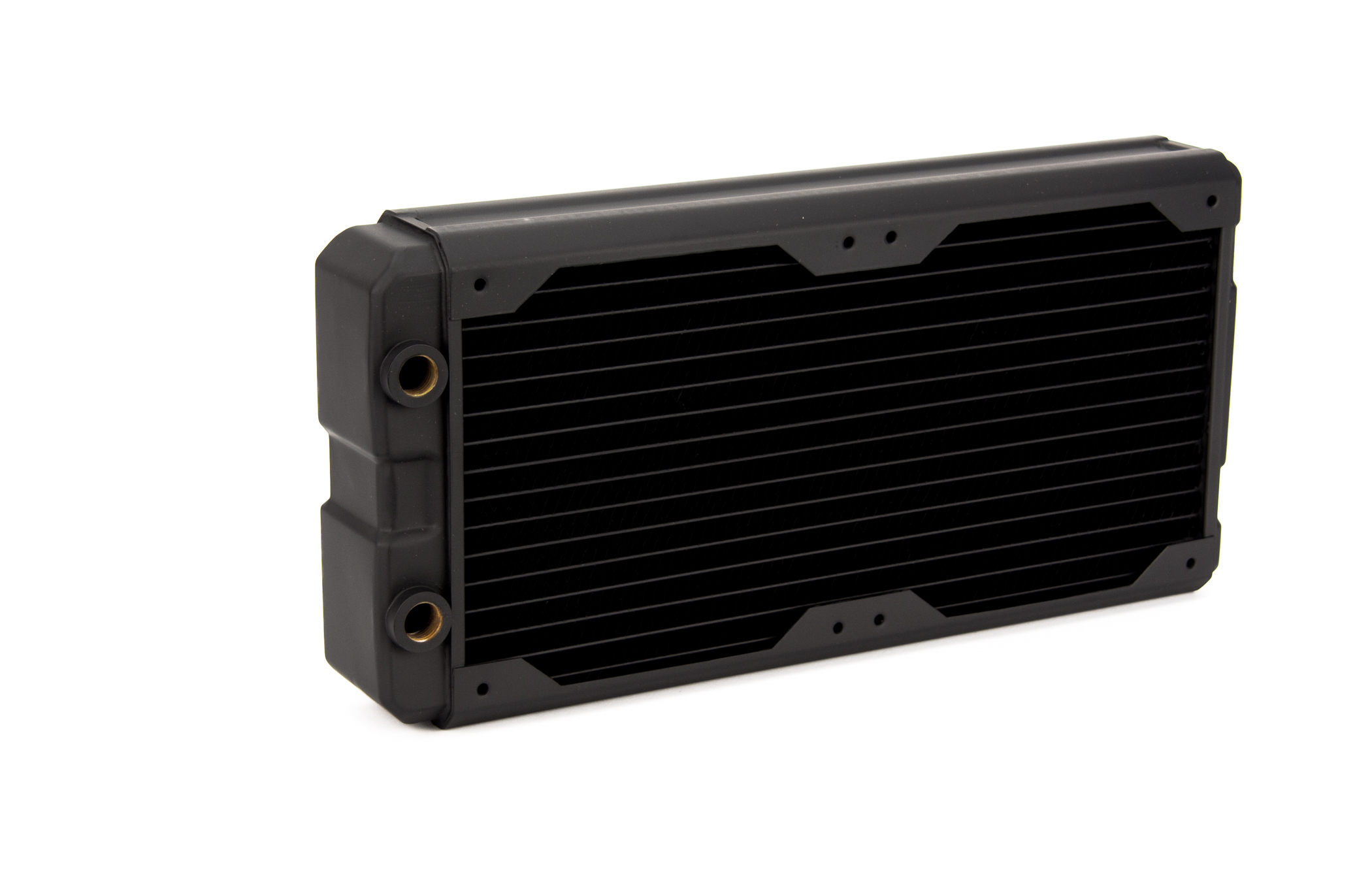
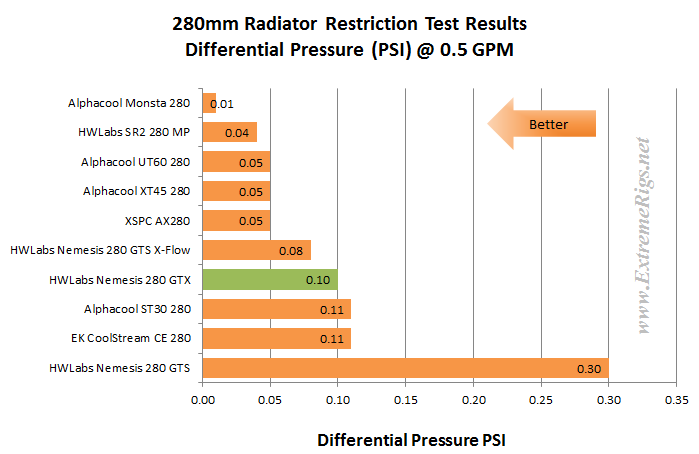
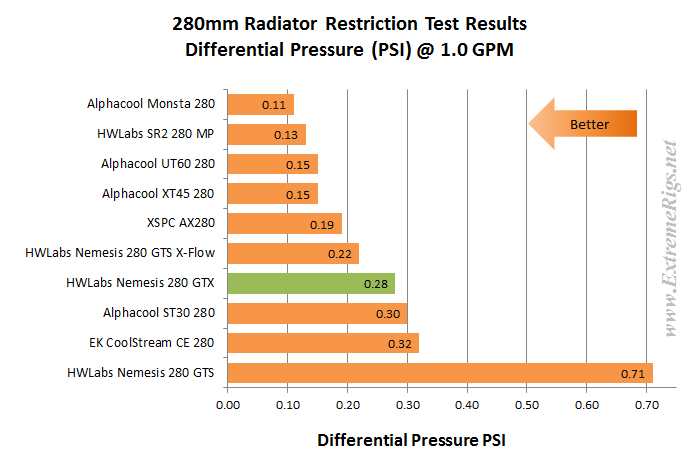
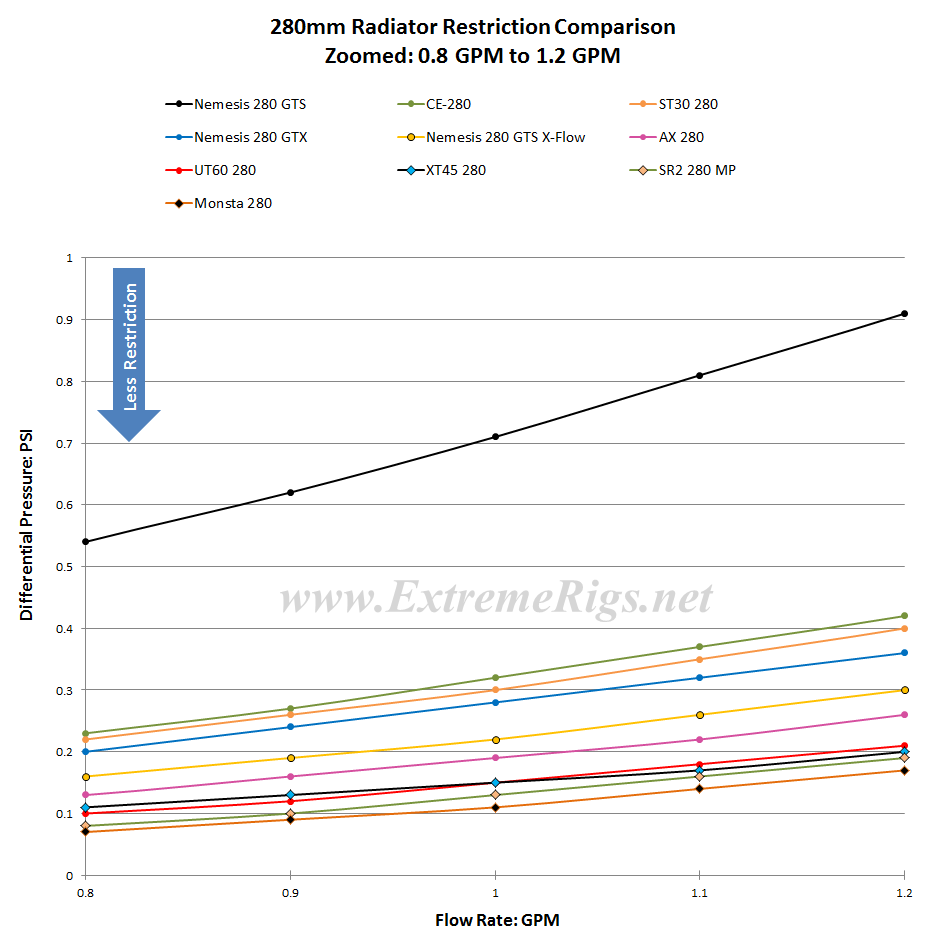
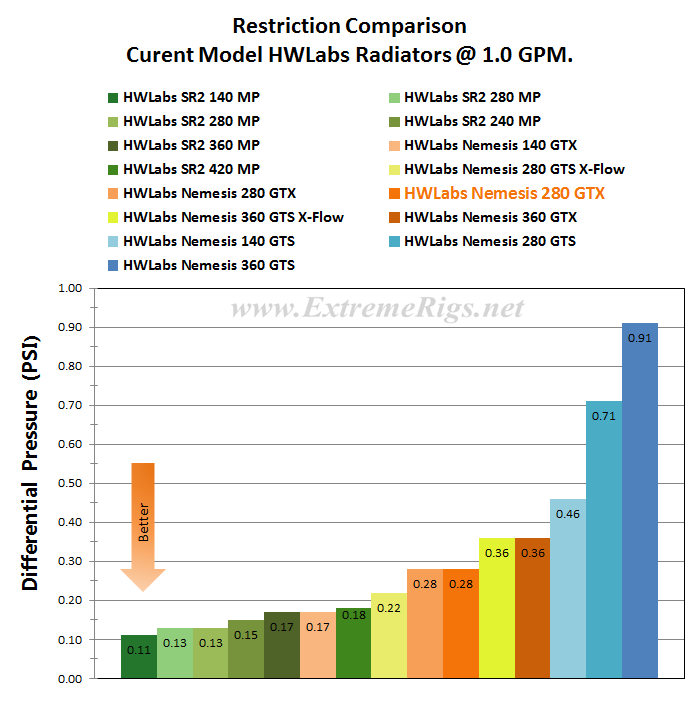



Why is such a thick rad not multiport? At least have 4 ports for easy top filling, and a temps sensor….. would help a ton.
Hey Drew – The Nemesis GTX rads have this front to back flow that makes adding alternative input/output ports quite hard because the end tank is split in half in the different way to a u-flow rad. Now that’s not to say it can’t be done with some tubes and more welding – but it would complicate things and push the price up. However ports could be added at both ends for functionality without being allowed for input/output – i.e. for filling/draining/temp sensors. This would give more functionality at least without requiring more complicated internal tubes and welding.
Comments are closed.